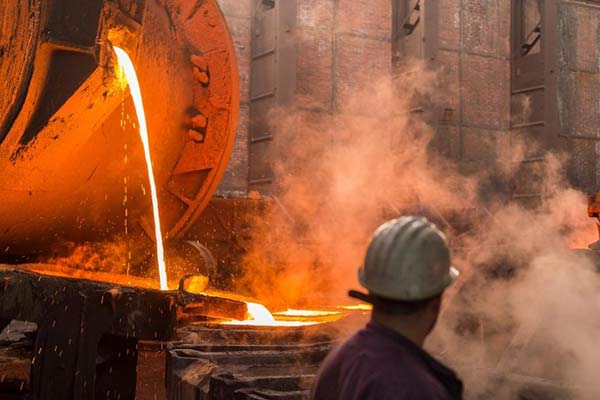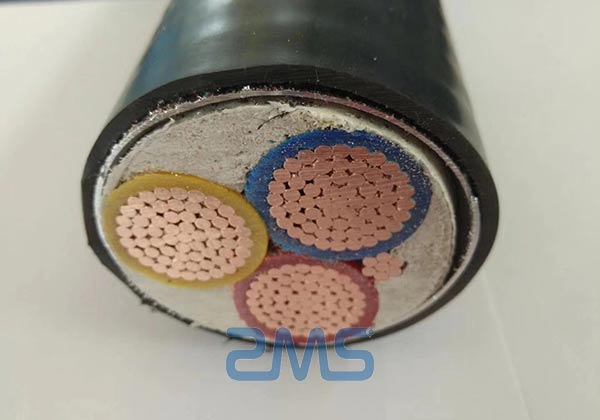Global Copper Demand Increases
An analysis by Standard & Poor’s Global (S&P Global) found that copper supply shortages could become a major destabilizing factor for international security in the 21st century.
“The projected annual shortfall will put unprecedented pressure on the supply chain. The challenges this presents are reminiscent of the 20th-century scramble for oil, but may be accentuated by the greater geographic concentration of copper resources and downstream industries refining them into products.”
We all know that copper is an essential metal for our lives, how it is developed and how it is used to the point where demand surprisingly exceeds supply, let ZMS cable company’s editor bring you some news below.
Copper is considered the “electrification metal” and is critical to all energy transition plans. Despite its critical position, the potential supply and demand gap is expected to be very large as the energy transition intensifies. Replacement and recycling will also be insufficient to meet the demand for electric vehicles, electricity infrastructure, and renewable energy generation.
In its report, Standard & Poor’s warns that “unless significant new copper supply comes online in time, the goal of achieving net zero emissions by 2050 will not be met and will remain out of reach.”
And copper demand is expected to grow from 25 million tons today to about 50 million tons by 2035, according to the firm. This record high level will continue, growing to 53 million tons by 2050.
The long-term gap between global copper supply and demand is expected to have serious consequences for the global economy starting in the middle of the century and will affect the timing of achieving net zero emissions by 2050.

About Copper
Copper is the earliest metal used by humans.
As early as prehistoric times, people began to mine open-pit copper and use the obtained copper to make weapons, tools, and other utensils. Copper is a metal found in the earth’s crust and the oceans. The content of copper in the earth’s crust is about 0.01%, and in individual copper deposits, the content can reach 3% to 5%. Most of the copper in nature exists as compounds, i.e. copper minerals.
It is the only metal that can be produced naturally in large quantities and is also present in various ores. It can be used industrially, engineeringly, and technically in its single metal state as well as in the form of brass, bronze, and other alloys.
Basic Uses
Copper is a non-ferrous metal that is very closely related to human beings and is widely used in the electrical, light industry, machinery manufacturing, construction industry, defense industry, and other fields.
Copper is the most widely used in the electrical and electronic industries and the largest amount, accounting for more than half of the total consumption. It is used in the manufacture of various cables and wires, motors and transformers, switches, and printed circuit boards.
Copper Conductor Cable and Aluminum Conductor Cable
In addition to copper cables, the most used conductor material in cables is aluminum. So what is the difference between aluminum and copper cables?
The following is the difference between copper and aluminum cables.
1. Low resistivity: the resistivity of aluminum-core cable is about 1.68 times higher than that of copper-core cable.
2. Good ductility: the ductility of copper alloy is 20-40%, the ductility of copper for electricians is more than 30%, while the aluminum alloy is only 18%.
3. High strength: The allowable stress at room temperature is 7~28% higher for copper than aluminum respectively. Especially the stress under high temperatures, the difference between the two is very far.
4. Fatigue resistance: aluminum is easy to break after repeated bending, and copper is not easy. For elasticity indicators, copper is also higher than aluminum about 1.7 ~ 1.8 times.
5. Good stability, and corrosion resistance: copper core oxidation, and corrosion resistance, while the aluminum core is susceptible to oxidation and corrosion.
6. High capacity: due to low resistivity, the same cross-section of copper-core cable as aluminum-core cable allows the capacity (able to pass the maximum current) to be about 30% higher.

7. Low voltage loss: due to the low resistivity of copper-core cable, the same section is in the case of the same current flow. Copper-core cables have a small voltage drop. Therefore, the same transmission distance, to ensure higher voltage quality; or, under the conditions of the allowable voltage drop, copper-core cable transmission can reach a longer distance, that is, a large power supply coverage area, which is conducive to the planning of the network and reduce the number of power supply points set.
8. Low heat generation temperature: At the same current, the heat generation of copper-core cables of the same cross-section is much smaller than that of aluminum-core cables, making the operation safer.
9. Low energy consumption: Due to the low resistivity of copper, it is obvious that copper cables have low power loss compared to aluminum cables. This helps to improve the utilization rate of power generation and protect the environment.
10. Oxidation resistance, and corrosion resistance: copper core cable joints are stable and will not cause accidents due to oxidation. Aluminum-core cable joints are unstable and often cause accidents due to oxidation and increased contact resistance and heat.
11. Convenient Construction.
– Copper core is flexible and allows a small radius of bend, so it is convenient to turn and easy to put through the pipe.
– The copper core resists fatigue and is not easy to break when bent repeatedly, so it is convenient for wiring.
– In the copper core of high mechanical strength, can withstand large mechanical tension, so the construction of laying brings great convenience, but also creates the conditions for mechanized construction.
12. The cable is very light: the weight of the aluminum-core cable is 40% of the copper-core cable, and construction and transportation are low cost.
13. Oxidation resistance, and corrosion resistance: aluminum in the air and oxygen reaction quickly generate an oxide film, and can prevent further oxidation, so aluminum conductors are high voltage, large cross-section, large span overhead transmission must be selected materials.
Although aluminum-core cables and cheaper, copper cables have outstanding advantages in cable power supply, especially in the field of underground cable power supply. Underground use of copper-core cable power supply has a low accident rate, corrosion resistance, high reliability, easy construction and maintenance, and other characteristics. This is also the reason why copper cables are mainly used in underground cable power supply in China at present.
14. Cheap: the copper rod is 3.5 times the price of an aluminum rod, and the specific gravity of copper is 3.3 times that of aluminum, so the aluminum-core cable is much cheaper than copper-core cable, suitable for low capital projects or temporary power.
The above is the introduction of copper and copper cable and aluminum cable comparison. No matter what cable, the choice should be considered more comprehensive and specific. ZMS cable company has been concerned about cable development, and always adheres to providing high-quality cables, good value for money, thoughtful service, products after strict manual qualification audit, trustworthy.
